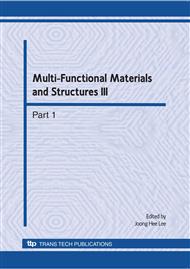p.291
p.295
p.299
p.303
p.307
p.311
p.315
p.319
p.323
Comparative Bioavailability Studies of Two Indomethacin Controlled Release Formulations in Healthy Albino Sheep's
Abstract:
The purpose of the present study was to compare the in vitro release and to findout the bioavailability of a 75 mg indomethacin capsule (Microcid®SR - reference - product A) was equivalent to optimized formulation (indomethacin loaded microspheres – test – product B). Indomethacin (IM) loaded carnauba wax fat microspheres were prepared by using meltable emulsified dispersion cooling induced solidification technique utilizing a wetting agent. Solid, discrete, reproducible free flowing microspheres were prepared. The yield of the microspheres was up to 92%, having smooth surfaces, with free flowing and good packing properties, angle of repose, % Carr’s index and tapped density values were within the limit. More than 98.0% of the isolated spherical microspheres were in the particle size range of 1135 - 1360 mm were confirmed by scanning electron microscopy (SEM). The drug loaded in microspheres was stable and compatible, as confirmed by DSC and FTIR studies. A single dose, randomized, complete cross over study of IM (75 mg) microspheres was carried out on 10 healthy male and female Albino sheep’s under fasting conditions. The plasma was separated and the concentrations of IM were determined by HPLC-UV method. Plasma IM concentrations and other pharmacokinetic parameters obtained were statistically analyzed. Based on this study, is it possible to conclude that drug loaded microspheres and Microcid®SR capsule are bioequivalent in terms of the rate and extent of absorption.
Info:
Periodical:
Pages:
307-310
Citation:
Online since:
August 2010
Authors:
Keywords:
Price:
Сopyright:
© 2010 Trans Tech Publications Ltd. All Rights Reserved
Share:
Citation:


